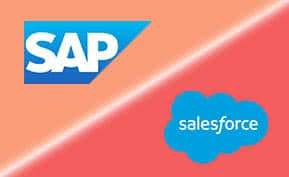9 Stages of the Business Cycle and How CRM Software Can Help
There are 9 stages in the Business Lifecycle. Knowing what the nine stages are can help sales teams build a better understanding of the unpredictable business/sales cycle. Not only will acknowledgement of the 9 cycles help sales teams better manage their time and resources, but there are opportunities to be found with a CRM solution in each cycle. CRM software plays a vital role in business performance, and customer relationship management. Here are the 9 stages of Business and how CRM software can help you each step of the way.
Economic Cycle
No business is unaffected by a bad economy. In times of recession and economic crisis, CRM software is a business necessity. CRM Systems help businesses record activity through a rollercoaster of economic conditions overtime. As a result, the recorded information can be used to help businesses predict how a recession or crisis will affect business performance. With this vital sales information, decision makers can predict the impact of a longer sales cycle and cancelled orders.
Industry Cycle
Within each industry, there is a cycle that is independent of the economic cycle. Factors that influence the industry cycle include: commodity pricing, the competitive market and the labor market. CRM Software can step in and help businesses record, monitor and analyze the impact of the industry cycle on business activity. CRM software can also help businesses figure out what cycle their clients are in so that sales strategies can be implemented accordingly.
Company Cycle
Each company has a unique life cycle, under the umbrella of its specific industry. Usually companies will experience a period of rapid growth, typically at the beginning of their company’s history. CRM software can help businesses understand where their company is in relation to their other business cycles. This is an important tactic, because companies shouldn’t assume that an increase in orders placed in the fast growth period will continue overtime.
Budget Cycle
Within each company resides yet another business cycle known as the budget cycle. This cycle is an internal process that is used to plan and manage spending. CRM software can play a very important role in optimizing sales by recording clients’ budget cycles so that proposals can be executed at the right time. With the help of CRM software, sales teams can strike while the iron is hot, aka when a budget is being allocated, instead of missing a cycle and having to wait for the next year.
Ordering Cycle
Businesses with a steady income and stable business cycles usually have a routine ordering cycle as well. CRM software can help your business target clients before their new ordering cycle starts, so that they can get involved in the bidding process. This CRM function can help businesses stay competitive and even pre-empt their competition.
Replacement Cycle
All good things must come to an end, even software. For this reason, it is important for businesses to keep track of their clients’ replacement cycles. Replacing old software is inevitable and CRM software can help keep track of the age of customer equipment to anticipate the perfect time to suggest new or replacement software.
Inventory Cycle
Businesses that have inventory try their best to maintain a balance between supply and demand, so that no money is lost or wasted. An inventory cycle is best managed with CRM software that tracks inventory levels, thereby facilitating the process of inventory management. CRM software also helps sales teams handle orders and delivery expectations, so that they can judge whether they should be more or less aggressive about moving inventory.
Product Cycle
Another part of the business lifecycle, is the product cycle. Yes, that’s right. Products have a life of their own, and may experience periods of abated or accelerated adoption. CRM software can help monitor and manage product trends so that sales can anticipate their next steps. If a product is in its accelerated adoption cycle for example, a company can strategically allocate their resources to optimize sales.
Sales Cycle
Last but not least, in the architecture of business, resides the sales cycle. The sales cycle represents every sales opportunity. It is important to track the sales cycle so that sales managers efficiently manage inventory. For example, sales managers can boost low performing sales opportunities with better training or a different sales strategy, as needed.
The Business lifecycle is a complex umbrella that shelters 9 different cycles beneath it. It is important to understand what each different cycle represents and how CRM software can optimize. CRM software is a vital tool for business success, and can help businesses improve and maximize profit on every cycle level.
[Photo courtesy of chargify.]





